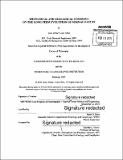| dc.contributor.advisor | Mark D. Behn. | en_US |
| dc.contributor.author | Olive, Jean-Arthur Louis | en_US |
| dc.contributor.other | Woods Hole Oceanographic Institution. | en_US |
| dc.date.accessioned | 2015-06-10T19:11:14Z | |
| dc.date.available | 2015-06-10T19:11:14Z | |
| dc.date.copyright | 2015 | en_US |
| dc.date.issued | 2015 | en_US |
| dc.identifier.uri | http://hdl.handle.net/1721.1/97338 | |
| dc.description | Thesis: Ph. D., Joint Program in Oceanography/Applied Ocean Science and Engineering (Massachusetts Institute of Technology, Department of Earth, Atmospheric, and Planetary Sciences; and the Woods Hole Oceanographic Institution), 2015. | en_US |
| dc.description | Cataloged from PDF version of thesis. | en_US |
| dc.description | Includes bibliographical references (pages 173-186). | en_US |
| dc.description.abstract | This thesis investigates the long-term evolution of rift-bounding normal faults. To first order, the observed diversity of extensional tectonic styles reflects differences in the maximum offset that can be accommodated on individual faults during their life span. My main objective is to develop a theoretical framework that explains these differences in terms of a few key mechanical and geological controls. I start by laying out the energy cost associated with slip on a normal fault, which consists of (1) overcoming the frictional resistance on the fault, (2) bending the faulted layer and (3) sustaining the growth of topography. In Chapter 2, I propose that flexural rotation of the active fault plane enables faults to evolve along a path of minimal energy, thereby enhancing their life span. Flexural rotation occurs more rapidly in thinner faulted layers, and can potentially explain the wide range of normal fault dips documented with focal mechanisms. In Chapter 3, I show that surface processes can enhance the life span of continental normal faults by reducing the energy cost associated with topography buildup. In Chapter 4, I focus on lithospheric bending induced by fault growth, which is well described by elasto-plastic flexure models. I demonstrate that numerical models that treat the lithosphere as a visco-plastic solid can properly predict fault evolution only when the rate-dependent viscous flexural wavelength of the lithosphere is accommodated within the numerical domain. In Chapter 5, I consider the interplay of faulting and crustal emplacement at a slow mid-ocean ridge. I show that a depth-variable rate of magma emplacement can reconcile the formation of long-lived detachment faults, which requires a moderate melt supply, and the exhumation of large volumes of lower crustal material. Finally, in Chapter 6 I investigate the three-dimensional interactions between normal faults in a lithosphere of varying thickness. I suggest that large along-axis gradients in lithospheric thickness can prevent the growth of continuous faults along-axis, and instead decouple the modes of faulting at the segment center and at the segment end. | en_US |
| dc.description.statementofresponsibility | by Jean-Arthur Louis Olive. | en_US |
| dc.format.extent | 186 pages | en_US |
| dc.language.iso | eng | en_US |
| dc.publisher | Massachusetts Institute of Technology | en_US |
| dc.rights | M.I.T. theses are protected by copyright. They may be viewed from this source for any purpose, but reproduction or distribution in any format is prohibited without written permission. See provided URL for inquiries about permission. | en_US |
| dc.rights.uri | http://dspace.mit.edu/handle/1721.1/7582 | en_US |
| dc.subject | Joint Program in Oceanography/Applied Ocean Science and Engineering. | en_US |
| dc.subject | Earth, Atmospheric, and Planetary Sciences. | en_US |
| dc.subject | Woods Hole Oceanographic Institution. | en_US |
| dc.subject.lcsh | Fault zones | en_US |
| dc.subject.lcsh | Mid-ocean ridges | en_US |
| dc.title | Mechanical and geological controls on the long-term evolution of normal faults | en_US |
| dc.type | Thesis | en_US |
| dc.description.degree | Ph. D. | en_US |
| dc.contributor.department | Joint Program in Oceanography/Applied Ocean Science and Engineering | en_US |
| dc.contributor.department | Woods Hole Oceanographic Institution | en_US |
| dc.contributor.department | Massachusetts Institute of Technology. Department of Earth, Atmospheric, and Planetary Sciences | |
| dc.identifier.oclc | 910515302 | en_US |
